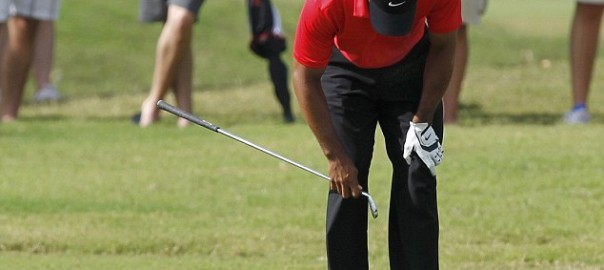Did PRP Therapy Help Tiger Woods?

PRP is an emerging non-surgical therapy used for treating almost all musculoskeletal injuries. It is very successful in treating ligament and tendon injuries except complete tears. So professional athletes were the first to try this revolutionary treatment. One of the first athletes to successfully use a PRP treatment was a professional golf player Tiger Woods.
TIGER WOODS’ TORN ACL
Everyone heard of Tiger Woods’ adulteries, car crashes and other headline stuff. But at the same time, very few people noticed his struggle with his injuries. Back in 2008, he had a reconstruction of the torn ACL of his left knee. Anterior cruciate ligament (ACL) is a very important knee ligament responsible for anterior-posterior as well as rotational stability of the knee, both of which are crucial for a golf player. The problem is that after the ACL reconstruction, return to sports activities is permitted after minimum nine months. Since recovery was slow and Woods was eager to get back into the game he decided to try PRP (Platelet-Rich-Plasma) treatment, which was at that time still an experimental therapy.
PRP PROCEDURE
PRP treatment is a medical procedure which lasts under an hour and consists roughly of three parts. First, the doctor draws a small amount of patient’s own blood. The blood normally consists of the liquid part (plasma) and three types of blood cells: red and white cells and platelets. Second is centrifugation of that blood in order to get platelet-rich plasma. The third part includes injecting the platelet-rich plasma into the injured tissue. Simple, yet powerful.
This therapy can be used to treat various medical conditions, but is often used as a treatment of ligament and tendon injuries. These structures have poor blood supply so they heal very slowly. PRP accelerates the healing process by growth factors released from platelets.
HOW HELPFULL WAS PRP?
After the ACL reconstruction, Tiger Woods received four injections of PRP into his left knee. He was so satisfied with the results that he also used this procedure to treat his injured Achilles tendon. Although the treatment lasted a few months, that’s still less than with any other form of treatment: surgery, immobilization or physical therapy. The results were good once again. So good, that during the following year, Woods took the first place in six tournaments, second place in three others and finished in the top ten in 14 events. The PRP treatment allowed him to maintain a high level of performance. Recently, Woods sustained additional injuries and underwent two major back surgeries so he is, once more, on the road to recovery.
More and more professional athletes use this method in order to stay at the top. Although the success of PRP is still questionable in some areas, the potential benefits outweigh the risk. The future of sports medicine is not in surgery, but in regeneration treatments, for most injuries. PRP therapy is surely a step toward that future.


